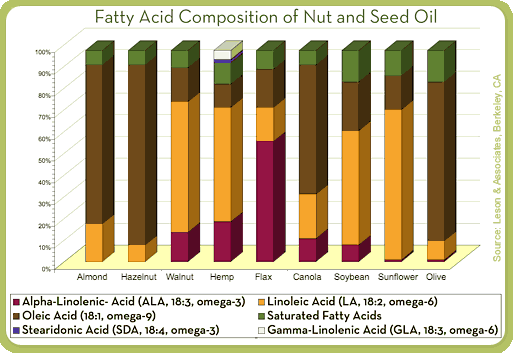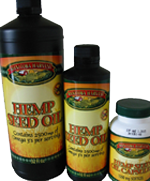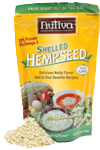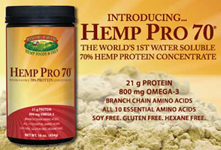Waking Times
Cancer. It’s one word that no one wants to hear in their diagnosis. It is certain that most of us in one way or another have been touched by cancer or know someone who has. However, cancer is no longer a guaranteed early death sentence.
Cancer research has come a long way. There are medicines that help treat cancer or kill it. An IMPORTANT factor in cancer recovery is nutrition. And what better way to beat cancer than with the world’s most perfect, healthy plant?
Cancer can be caused my numerous factors. Some say there is a genetic link – that some cancers run through family generations. Poor diet, smoking, injury, illness, environmental toxins, inflammation – these can all have a hand in the appearance of cancer.
Studies have shown that inflammation is the cause of many diseases and illnesses, including cancer.
“This study by researchers at the Ohio State University Comprehensive Cancer Center — Arthur G. James Cancer Hospital and Richard J. Solove Research Institute (OSUCCC — James) found that inflammation stimulates a rise in levels of a molecule called microRNA-155 (miR-155).
This, in turn, causes a drop in levels of proteins involved in DNA repair, resulting in a higher rate of spontaneous gene mutations, which can lead to cancer.” (www.sciencedaily.com)
“Chronic inflammation is a major cause of cancer in the world because it releases powerful oxidants which both stimulate cell division and are mutagens.” (users.rcn.com)What is inflammation?
“Inflammation is part of the complex biological response of vascular tissues to harmful stimuli, such as pathogens, damaged cells, or irritants. Inflammation is a protective attempt by the organism to remove the injurious stimuli and to initiate the healing process. Inflammation is not a synonym for infection, even in cases where inflammation is caused by infection. Although infection is caused by a microorganism, inflammation is one of the responses of the organism to the pathogen.” (Wikipedia)Below are some causes of inflammation:
Immune reactions
Infection
Physical injury
Toxins
Trauma
Irritants (chemical, abrasive, etc.)
Burns/cuts/scrapes
Bacteria
Anxiety/depression
Poor diet
All of the above conditions can affect the immune system, and when the immune system kicks in this is what can happen:
“Pro-inflammatory cytokines are part of our immune systems that attack and kill cells with oxidative chemicals. If they don’t stop their attacks, they will start killing cells our bodies need. Unchecked inflammation is now thought to be responsible for cardiovascular disease and cancers.” (http://www.mnwelldir.org)It is also believed that chronic inflammation is the result of low oxygen in the cells.
So, you may be asking, where does hemp come into play in all this?
If you recall, above I mentioned that poor nutrition can be a factor in inflammation. If the cells are not getting the nutrients they need they become unhealthy.
For example, hemp has the perfect ratio of Omega fatty acids. Fatty acids work to keep the cells healthy and strong, and keep the membranes supple for nutrients to easily pass in. Omega fatty acids are also the components in hemp that have anti-inflammatory properties.
Hemp has edestin protein, the protein closest to human globulin (and it is easily digested by the body). Edestin protein boosts the immune system by building what are called immunoglobulins, edestin works to repair cells, and also maintains cell DNA.
When the DNA in cells is damaged, that can cause cancer. When those damaged cells multiply, they cause cancer to grow.
Hemp is a complete protein and is one of the most nutrient dense plant sources on the earth. Because it is so nutrient dense, it makes it a perfect addition to the diet to improve and sustain health. It has been shown that in some instances poor nutrition have a hand in the occurrence of disease; proper nutrition with plenty of Omega fatty acids, protein, fiber, and micronutrients found in hemp can be the turning point to good health (along with wise diet choices, exercise, and removing as many toxins as possible).
It is a known fact that a nutrient-rich diet can treat or reverse disease. Can hemp cure cancer? Some say yes.
Does a diet rich in hemp help strengthen the body and immune system? That is a definite yes.
About the Author
Becca Wolford is a writer, entrepreneur, artist, reiki practitioner, and hemp activist. She has experienced first-hand the nutritional and healing benefits of hemp and her passion is learning, writing, and educating others about the benefits of hemp – benefits that encompass nutritional health for humans, a healthy environment, and a healthier economy. Becca also distributes Versativa, an amazing raw, clean, hemp-based nutritional supplement and Restoration90, a raw, clean, nutritional product with marine phytoplankton, hemp, and essential nutrients for optimum health. Please support her at her excellent blog Hemphealer.com.
This article is offered under Creative Commons license. It’s okay to republish it anywhere as long as attribution bio is included and all links remain intact








 1. Plant Description
1. Plant Description 5. Weed Control
5. Weed Control 7. Plant Population
7. Plant Population

 11. Harvest
11. Harvest Kennex Ltd. of Canada, is developing a harvesting system that will be compatible with the new processing technology. For fiber production, the crop will be cut, dew retted in the field, baled and stored or processed.
Kennex Ltd. of Canada, is developing a harvesting system that will be compatible with the new processing technology. For fiber production, the crop will be cut, dew retted in the field, baled and stored or processed. 12. Retting
12. Retting 13. Yield
13. Yield~p1_200.jpg)








